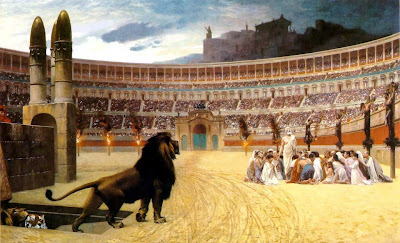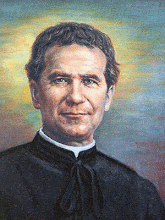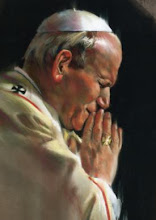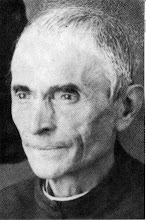The following comes from Those Catholic Men:
There is a scene I am always struck by in C.S. Lewis’ work The Great Divorce, where two friends, one dwelling in heaven and the other in hell, are discussing their loss of faith in college, and the slow process that led up to it. The damned soul firmly maintains that his opinions on religion, while possibly wrong, were honestly formed, and therefore did not merit condemnation. Then his old friend replies:
“Of course. Having allowed oneself to drift, unresisting, unpraying, accepting every half-conscious solicitation from our desires, we reached a point where we no longer believed the Faith. Just in the same way, a jealous man, drifting and unresisting, reaches a point at which he believes lies about his best friend: a drunkard reaches a point at which (for the moment) he actually believes that another glass will do him no harm. The beliefs are sincere in the sense that they do occur as psychological events in the man’s mind. If that’s what you mean by sincerity they are sincere, and so were ours. But errors which are sincere in that sense are not innocent.”
I have seen a good number of people drift away from their Catholic faith as they got older, began college or entered the work force. When I ask gently why they no longer practiced their faith, the response is usually a shrug and an “I guess it just sort of happened.”
Slowly, going to church slips away as we get busy: there is too much going on and too much to do (…and surely a loving God understands?). When we completely stop going, we also stop thinking about Christ or the faith. Less and less do we value the beliefs of that outdated, overly-institutional, and most likely corrupt church, and we take on the values of the outside world without questioning them. Next thing we know, it has been years since we have stepped foot in a church, since we have received forgiveness and the Lord in the Eucharist. And now? The distance is too great, it has been too long, and we are too sluggish. And, frankly, life is a mess. We are sinking in the mire and there doesn’t seem to be a way out.
Fulton Sheen once said, “If you do not live what you believe, you will end up believing what you live.” As the practice of the faith slips away, so does belief, exactly like the lost soul in The Great Divorce. I have noticed in my own life that falling away from God is a lot like gaining weight: It happens slowly over time, and we don’t really notice it or think about it until we are shocked at what we see in the mirror. It happens easily, without the slightest resistance or blatant red flag. Where was my warning? How did it come to this?
The point is this is not only a religious problem, but a human problem (then again, all genuine religious problems are human problems…) Ever since the Fall, all the things we value require effort from us, they don’t come natural anymore. No one slouches into becoming a professional athlete, having a good budget, maintaining a joyful marriage, or making the perfect cornbread (believe me, I’ve tried). Life, in all of its mystery and beauty, always requires something from us. And in the world of Netflix bingeing and online shopping, effort = waste of time.
And here is where Christ steps in, where He shakes us up and pulls us out of our dreary, everyday despair and shame. All it takes is a moment, something to happen that pulls us out of our mess, something completely unexpected. For Matthew, hanging out in his tollbooth, racking up the coins, it was this strange man that rolled up and simply said, “Come, follow me.” And Matthew was pulled out of his mess; he went and walked with this mysterious Jesus, and today we call him Saint Matthew. For Mary of Egypt, who paid her way to Jerusalem by seducing pilgrims, it was the Church of the Holy Sepulcher that forever changed her. An invisible barrier prevented her from stepping inside – no matter how hard she tried. She suddenly realized that all of her broken actions had built a barrier between her and the God who had become flesh, and it was in front of an image of Mary, ever virgin, that she discovered what she had been seeking her whole life. Today she is Saint Mary of Egypt, one of the great female desert ascetics (there is a beautiful painting of her receiving the Eucharist for the last time and regaining her purity in the art gallery of Washington D.C.). For me, as I struggle every day not to lose sight of the face of Christ or slouch back into old habits; it is daily Mass and my friendship with truly holy people that helps to pull me out of my own apathy and self-centeredness and remind me Who really matters. It is there that I encounter Christ and very often he surprises me.
Brothers, here is my point: we all struggle and we all drift because we live in a fallen world (and we are pretty dang fallen too). It is so easy to fall apart again, to step off the path and become lost. But this is not the end of the story: Christ, the Lord of history, enters into our mess and pulls us out.
And when Christ comes to rescue us (and He does), when He breaks into our lives in that so surprising and unexpected way, respond to it. Be faithful to it. When that random work of art pulls your heart in an unexpected way, or an old friend calls to catch up with you, or that tragic funeral awakens you again to the fact that there is more to life than getting ahead and sending cat pictures, realize that this is Christ calling you back to the Church, back to life, to really living and to having His peace and joy.
We are still fallen, so that response can be painful and difficult (standing in that confession line at those inconvenient hours – man, that is tough), but on the other side of it all is love, communion, and home; exactly what was all missing before. Don’t slouch into losing your faith, and if you do, respond to Christ’s call and come back, come back to the Church, come back to life and home.
“The only real sadness, the only real failure, the only great tragedy in life, is not to become a saint.” –Leon Bloy.














.jpg)


















